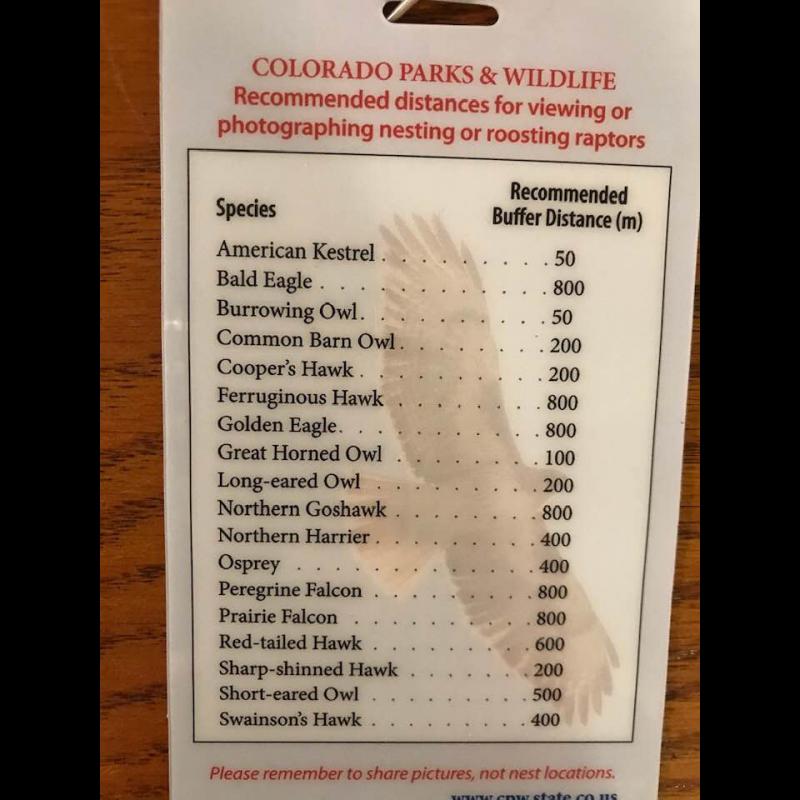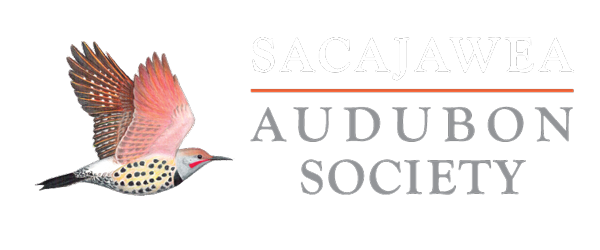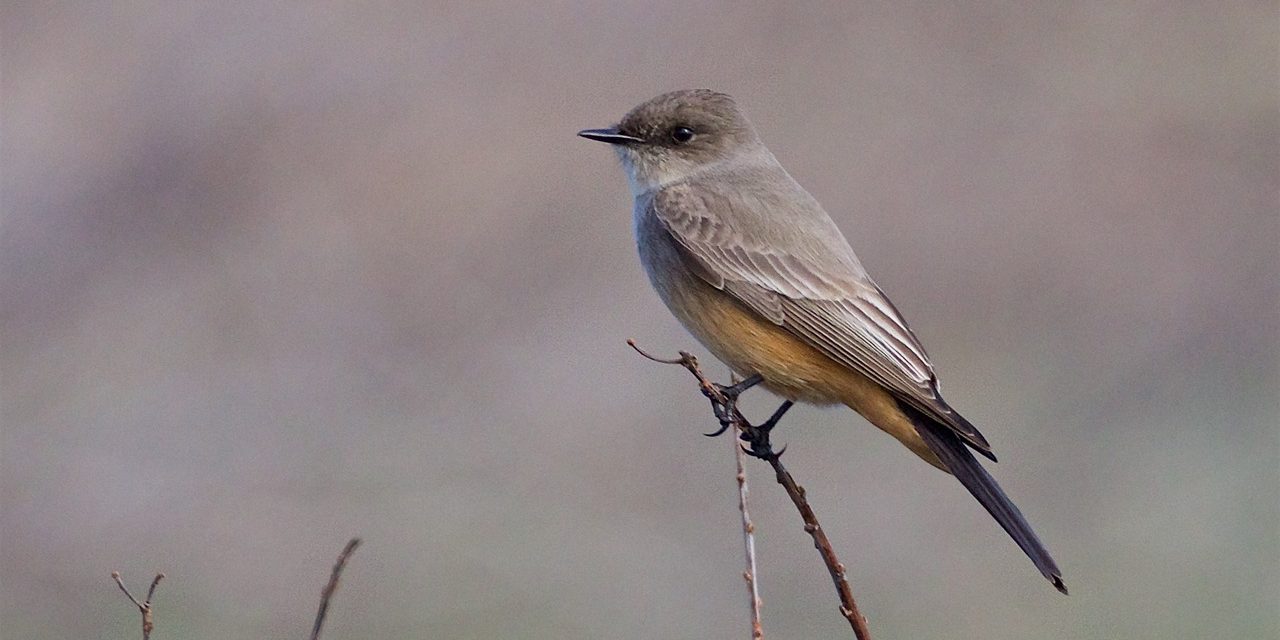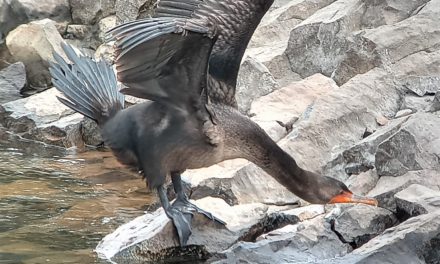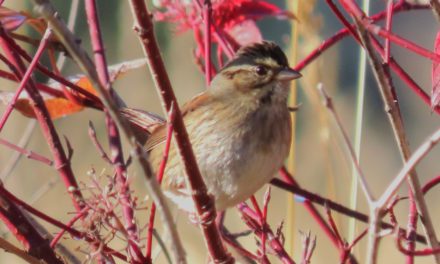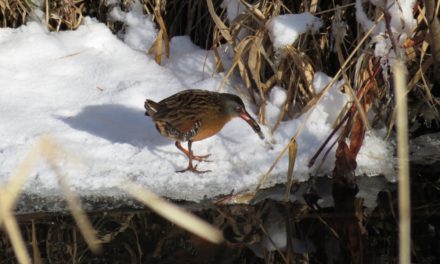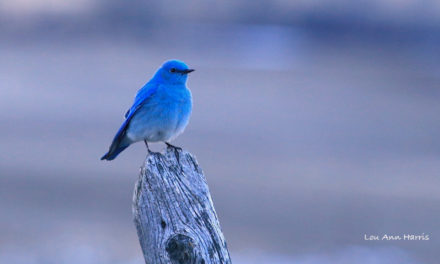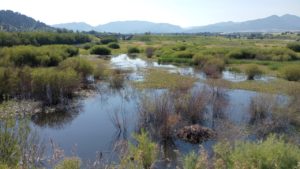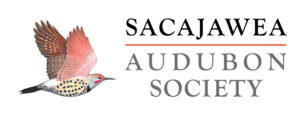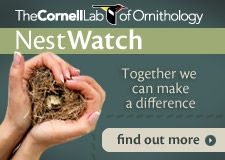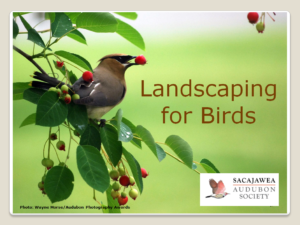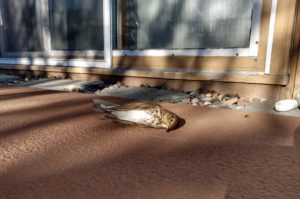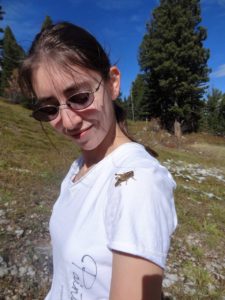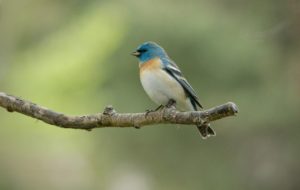As mentioned last month, the first Mountain Bluebirds are expected to arrive in early March. Right on schedule the first reported bluebirds in this area were the 2 Mountain Bluebirds seen south of Emigrant by Jeff Reed on March 4th.
Unreported in last month’s sightings article were the 11 Sandhill Cranes seen February 1st near Point of Rocks in Paradise Valley, by Annalise Kaylor and Jared Lloyd. This was truly an exceptional sighting for both the date and number of cranes. There are only a handful of Sandhill Crane records for Montana between mid-January and mid-February, and all of the previous observations during this period were of single birds.
This area’s first February record for Say’s Phoebe was established on the 27th, by Andy Boyce (a full month ahead of the expected first arrival date). The phoebe was seen in Paradise Valley as it was investigating possible nesting locations in the rafters of the Chico Lodge.
During the early morning hours of February 26th, Audrey Evers heard a Northern Pygmy Owl calling from the cottonwoods near her Four Corners home.
Locally, the nesting season has already begun for a number of bird species, most notably owls. Owls are such engaging birds for any number of reasons, so that people find them irresistible. This appealing nature which draws people to owls can sometimes cause behaviors that are harmful to the Birds’ feeding habits, ability to breed successfully, and even their very survival. This topic came to mind because recently I became aware of another egregious example of unthinking behavior around owls. In this case the person involved was using playback for multiple species of owls at several locations.
With the rapidly increasing number of people residing in and visiting southwestern Montana, the pressure on owls and other birds is greater by the day. Whether you want to see, hear, or photograph birds, the first rule of birding is “am I affecting the behavior of the bird”. One very good site covering how to behave around owls is on the International Owl Center website under the heading “Owls and You”. Another informative website is the Colorado Parks and Wildlife section on “Raptor-Buffer-Guidelines”.
Another issue that needs to be addressed is the evolution of social media, and how it can affect our interaction with birds. It’s always been the case that we want to share our sightings with others. But the combination of increasing numbers of people and the speed of communications, in some cases, is having a profound affect on the way we bird and our expectations (see eBird, Facebook, etc.). Perhaps it’s worth considering whether you should even share the whereabouts of potentially easily disturbed birds. Another strategy to spare an owl undue pressure is to delay entering the bird into eBird or Facebook for a week or two, and of course, there is an option to hide your list on eBird. Also avoid giving the specific locations of nesting and roosting sites. For a good general source for birding ethics use the American Birding Association Birding Code of Ethics.
So, get out this spring, and enjoy looking for birds. But also, be sure to look out for the birds’ welfare and safety from disturbance.
